Memphis and Thebes: A Tale of Two Ancient Egyptian Capital Cities
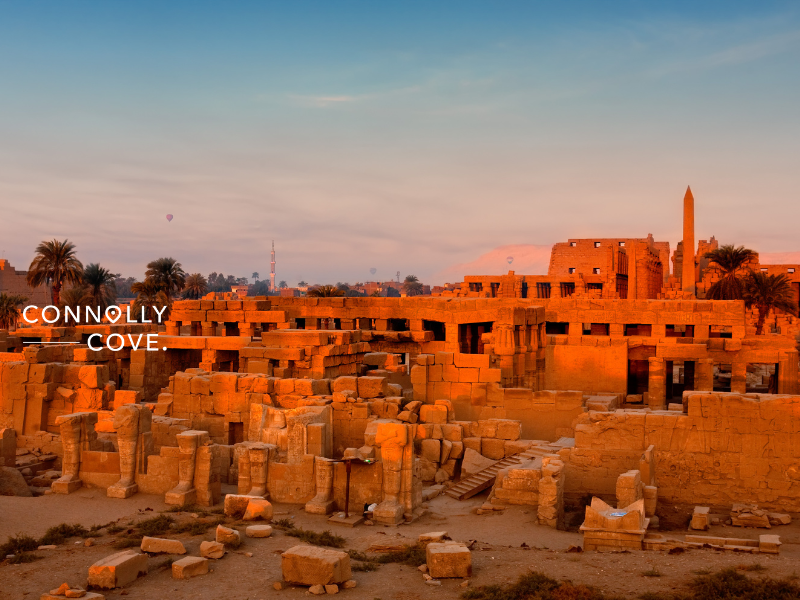
Updated On: February 19, 2024 by Noha Basiouny
Thousands of years ago, and for thousands of years too, the ancient Egyptian civilisation flourished around the rich, fertile banks of the Nile River, leaving an ineradicable mark on the annals of human history. Beyond the grandeur of the pyramids and the mysticism of the Valley of the Kings lies a captivating tapestry of two bustling capital cities that once thrived in the heart of the desert.
The iconic city of Memphis that once hailed as the capital of a united Egypt and the vibrant metropolis of Thebes, steeped in the glory of the New Kingdom, each city held its own unique allure and played a crucial role in shaping the destiny of this incredible civilisation that spanned for around 3000 years of native Egyptian rule.
In today’s story, we are going on a captivating expedition through time to explore the remnants of these urban marvels, uncover the secrets of their construction, the societal dynamics that defined their existence, and the cultural development that formed a civilisation of unparallelled sophistication.
So, let’s hop into it.
1. The Capital City of Memphis
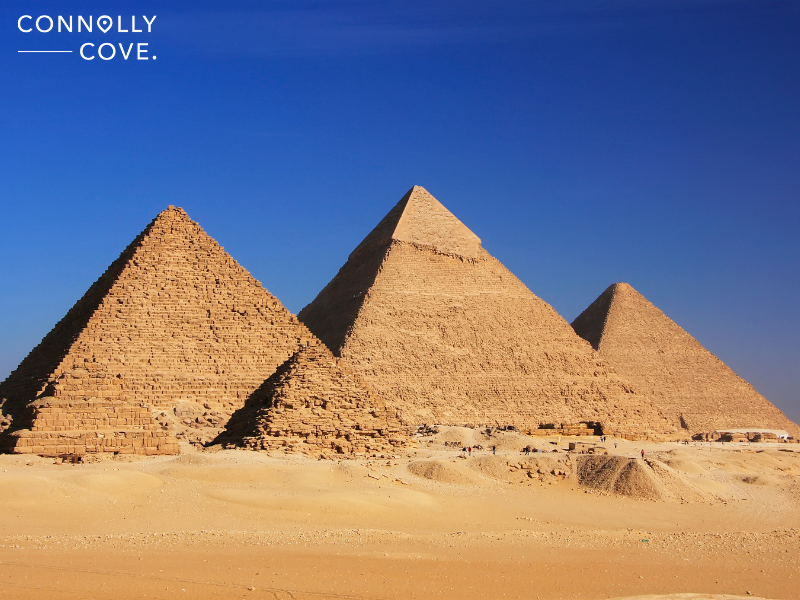
No, not that Memphis in Tennessee, US.
The original city of Memphis was the capital of Egypt during the Early Dynastic Period (3150-2900 BC) and continued to hold this esteemed position for several more dynasties, particularly during the Old Kingdom (2686-2181 BC). Currently a UNESCO World Heritage Site, Memphis is most famous for the construction of the pyramids.
When Memphis was exactly established has not been historically confirmed, but most, if not all, scholars agree that it was shortly after King Narmer, or Menes, the first Pharaoh of Egypt, unified the Kingdoms of Lower and Upper Egypt under one crown, his crown, in 3150 BC. The new authority needed a new capital, and the new capital became Memphis.
Name
Interestingly, the city’s name, as ancient Egyptians knew it, was not Memphis. In fact, the city seems to have held many names throughout its centuries-long history. That said, Memphis is actually the Greek adaptation of one of those many ancient Egyptian names.
Over time, the Greek name lingered, and the Egyptian names fell into oblivion along with the ancient Egyptian language itself, until the discovery of the Rosetta Stone in 1799, which revived the ancient Egyptian civilisation.
Location
Memphis was located south of Delta, on the west bank of the River Nile. This was quite a strategic location near the junction of Upper and Lower Egypt, which not only symbolised its pivotal role in the unification of the kingdom but also allowed it to control and oversee trade routes along the Nile. Besides, the city enjoyed the privilege of fertile land, which contributed to its prosperity and growth.
As of today, the ruins of Memphis are currently located in Badrashin, Gize, around 25 kilometres from Cairo or a 38-minute car ride.
Prosperity
Memphis grew into a bustling metropolis with a diverse population and prosperous economy. It was a centre for trade and commerce, attracting merchants from various regions, an activity that was linked to its strategic location and access to the Nile, as we mentioned.
Like all ancient and modern capital cities, Memphis was adorned with awe-inspiring structures. It incorporated the iconic Temple of Ptah, dedicated to the patron deity of the city, who was associated with creation and craftsmanship. This sacred site was not only a religious centre but also a hub of artistic and intellectual endeavours, showcasing the mastery of ancient Egyptian craftsmen and architects.
The Early Dynastic Period was succeeded by what scholars agreed to call the Old Kingdom of Egypt, the first of three golden ages of the ancient Egyptian civilisation.
This period started when legendary King Djoser ascended to the throne in 2686 BC.
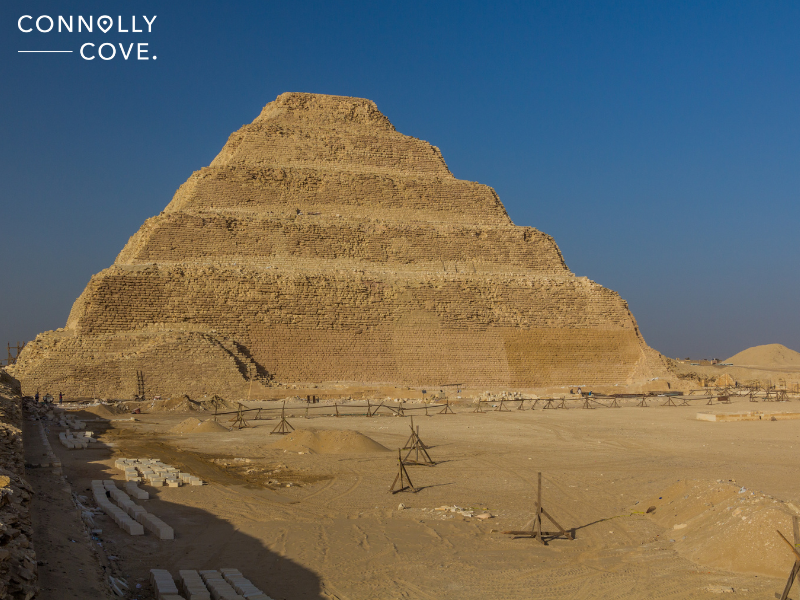
Memphis remained the capital of Egypt during the Old Kingdom, asserting its dominance in the political and religious spheres and reaching its peak in 2670 BC when Djoser built the Step Pyramid, the first ever in Egypt and the world.
The Step Pyramid kick-started a stunning architectural evolution in Egypt, which peaked with the construction of the three great Pyramids of Giza, making what later became the vast necropolis of Saqqara.
Downfall
For half a century that marked the Old Kingdom, Egypt, as well as Memphis, were pretty prosperous, powerful, and stable.
Yet, like everything else, this period came to an end in 2181 BC and was followed by the First Intermediate Period. During this phase, Memphis experienced a political and social upheaval marked by weakened central authority and regional strife. Memphis stayed the capital of Egypt until 2160 BC before the administration moved to Heracleopolis Magna, a city in Upper Egypt, in the Ninth Dynasty.
Memphis regained its prominence during the Middle Kingdom (2130 BC – 1649 BC) with a resurgence in political stability, economic prosperity, and cultural achievements. However, it did not serve as the country’s capital during that period or ever again.
By the beginning of the New Kingdom in 1550 BC, power was relocated to Thebes, leading to a gradual decline in Memphis’s political significance. However, the city remained a hub for culture, trade and religious activities for centuries.
2. The Capital City of Thebes
Thebes was situated on the east bank of the Nile River, exactly where modern-day Luxor is now, which is about 670 kilometres from Cairo. Like with Memphis, ancient Egyptians used to call the city by different names. The name Thebes itself is said to be what the Greeks called the city when they invaded Egypt under the command of Alexander the Great in 332 BC.
Also, like Memphis, Thebes, now Luxor, was announced as a UNESCO World Heritage Site in 1979.
Rise
It is not known exactly when Thebes was established, but apparently, it was long enough before it became the capital. It was associated with the god Amun from early times, so when Amun’s worship spread widely, the city’s prominence grew.
Thebes became the capital city of Egypt during the Middle Kingdom and the New Kingdom, two glorious periods of ancient Egyptian history separated by 175 years of anarchy.
As we mentioned a few paragraphs ago, the First Intermediate Period was a time of chaos, economic decline, and political conflicts that eventually led to the division of Egypt into two kingdoms. The Lower Kingdom, to the north, had the capital of Heracleopolis Magna, and that of Upper Egypt, in the south of the county, was centralised in Thebes. Both kingdoms were fighting, each trying to take over the other.
In 2060 BC, the fight ended in favour of Upper Egypt when Mentuhotep II, the sixth pharaoh of the 11th Dynasty, ruling from the south, succeeded in reunifying both kingdoms, officially starting the second golden age of Egyptian civilisation. This was also when Thebes became the official capital of the newly unified country.
The Middle Kingdom of Egypt is characterised by a period of stability and consolidation during which Thebes grew to become the most significant city in the country in terms of politics, culture, economy, religion, and, most importantly, architectural development. This continued until the Middle Kingdom came to an end in 1649 BC.
For the next 175, Egypt fell into mayhem once again, which was initially caused by internal conflicts over succession and the fights among many local rulers to seize power. The fragmentation this chaos caused in the country made it too weak to stand against foreign invasion.
In 1638 BC, Hyksos from the Levant in Western Asia conquered Egypt and took control of Lower Egypt while Upper Egypt continued to have native Egyptian rule. The capital of Upper Egypt remained Thebes, yet Avaris became the new capital city of Lower Egypt under the domination of Hyksos.
Things stayed the same, and Hyksos remained in control of Lower Egypt for the next century. It was not until 1550 BC that Upper Egypt started rebelling against the foreign rule. When king and fearless military leader Ahomse came to power, he raised a strong army and marched up north, engaged in a battle with Hyksos, defeated them and expelled them from Egypt.
This marked the official start of another golden age, the New Kingdom of Egypt, where Thebes, once again, rose to glory.
Prosperity
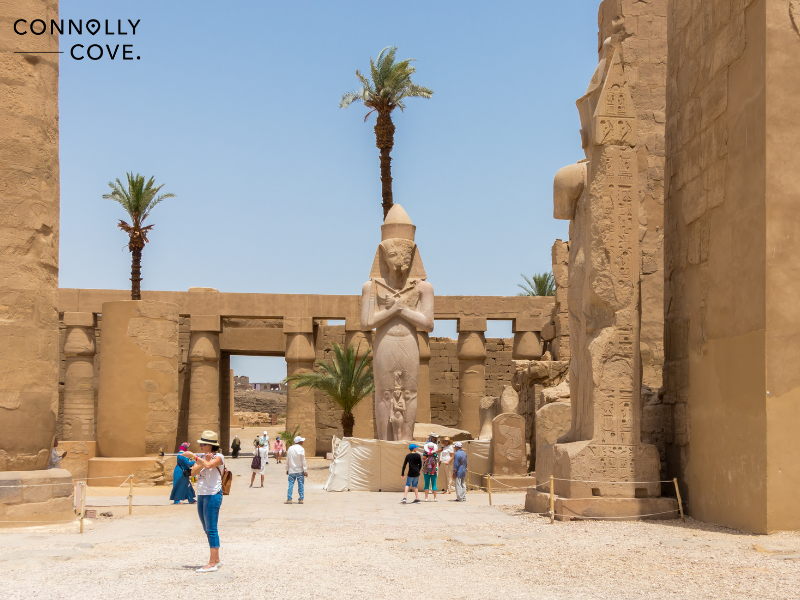
Luxor, or ancient Thebes, is currently the largest ever open-air museum with cities loaded with thousands of monuments, temples, tombs, shrines, obelisks, and many other awe-inspiring testaments to the architectural prowess of ancient Egyptians. The city, as long as everything it incorporates, from the tiniest grain of sand to the tall obelisks of Hatshepsut, was actually announced as a UNESCO World Heritage Site also in 1979.
Thebes’ crowning glory is undoubtedly the Karnak Temple Complex. Mainly dedicated to the worship of Amun-Ra, the chief deity of Thebes, Karnak is a sprawling complex of temples, pylons, and obelisks that unfolded over centuries, reflecting evolving religious beliefs and dynastic contributions.
The first recorded structure at Karnak was a column for the sun god Amun-Ra erected by Pharaoh Intef II during the Middle Kingdom, precisely around 2055 BCE. While not a large-scale building, this column suggests earlier religious importance at the site. Yet, it was not until the era of Pharaoh Senusret I—ruling from 1971 BC to 1926 BC—of the 12th Dynasty that significant construction work was initiated at the site.
That said, the temple complex’s most extensive and grandiose phases were actually carried out by New Kingdom pharaohs, especially during the 18th Dynasty. Notable rulers like Amenhotep III and Ramses II made substantial contributions to Karnak, expanding its precincts, erecting obelisks, and constructing new temples within the complex.
Ramses II, in particular, is renowned for his significant additions, including the construction of the Great Hypostyle Hall, an enormous hall with 134 massive columns, and the erection of colossal statues at the entrance.
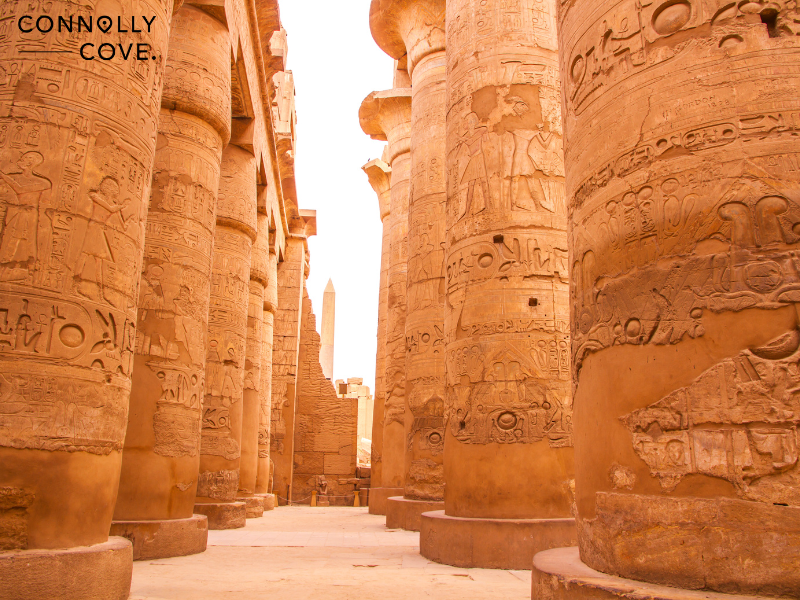
Equally mesmerising to the Karnak Temple Complex is the Valley of the Kings, located right on the west bank of the Nile. This is home to the burial tombs of numerous pharaohs, including famous rulers like Tutankhamun, Ramses II, and Seti I.
During the reign of Amenhotep III, Thebes reached its zenith, adorned with grandiose structures like the Colossi of Memnon and the Luxor Temple, emphasising the city’s cultural and political significance. The Avenue of Sphinxes, the 2,700-metre road connecting Karnak and Luxor, is another significant construction work that metaphorically symbolises the divine pathway linking the earthly and celestial realms.
Akhetaten
Perhaps the significance of Thebes as the powerful, prosperous capital of Egypt started to shake during the reign of Akhenaten, who ditched the old Egyptian religion that was based on polytheism or the worship of multiple gods, and started promoting the worship of the only one god, whom he named Aten and symbolised by the sun disc.
But the issue was that Thebes was the country’s most important religious hub that was centred around the Amun-Ra, the chief deity of the hundred other deities that ancient Egyptians believed in. The new pharaoh needed new land.
So Akhenaten closed all the temples in Thebes, a move that outraged the priests who were in control of them, and left the city altogether, headed up north and established a new capital, which he called Akhetaten and to which power was moved.
Yet, the eclipse Thebes faces was temporary and the city came back under the spotlight when Akhenaten died in 1336 BC and was succeeded by his son, the famous young pharaoh Tutankhamun. The latter ruled from Thebes and oversaw the restoration of traditional religious practices, and the city retrieved its cultural and religious activities.
Pi-Ramesses
Thebes encountered another disruption in its position as the capital city of Egypt when Pharaoh Ramesses II, who ruled from 1279 BC up until 1213 BC, decided to build a new capital where he moved the county’s administration.
Ramesses II envisioned Pi-Ramesses as a symbol of his power and Egypt’s greatness. The city was meticulously planned and boasted monumental palaces, temples, administrative buildings, and residential areas. In fact, archaeologists could unearth the remains of a grand palace complex, including a throne room adorned with colossal statues of Ramesses II while they were excavating the site of the ancient city.
Pi-Ramesses continued to be the capital of Egypt for 136 years after Ramesses II’s death, precisely until the end of the 20th Dynasty, which marked the end of the third and last golden age of ancient Egypt, the New Kingdom, and the beginning of another long chaotic phase, the Third Intermediate Period.
Downfall
After Pi-Ramesses, the authority did not return to Thebes as it had when Akhetaten’s story ended. This is mainly attributed to the decline of central authority in Egypt during the Third Intermediate Period, which led to political fragmentation.
Local rulers gained power, established semi-independent dynasties, and built different other political centres to rule from, such as Tanis, Bubastis, and Hermopolis. These emerging cities competed with Thebes for political and economic influence and weakened its control over the country.
This, along with corruption, extensive tomb robbery, and power struggles, led to the weakening of the entire country, which made Egypt prone to foreign threats, loss of Egyptian outlying territories, and more and more internal fragmentation. Eventually, Egypt fell into the hands of Persians in 525 BC and the native Egyptian rule came to an end.
The once-mighty cities of Memphis and Thebes stand as enduring symbols of the rich and complex tapestry that was once ancient Egypt. From Memphis’ monumental structures best represented by the Pyramids of Giza to Thebes’ grand temples of Karnak and Luxor, each city, with its unique history and contributions, reflects the ebb and flow of ancient Egypt.
While the stones and columns may bear witness to the passage of millennia, the stories of Memphis and Thebes continue to echo through time, inviting us to dive deeper into the mysteries of one of the world’s most fascinating civilisations.






